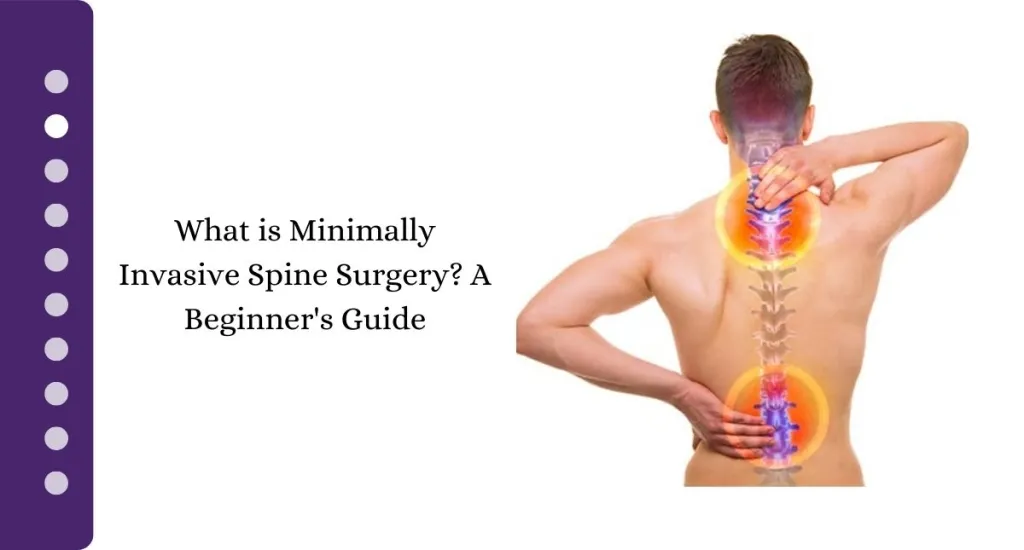In this entire blog we came to know what plastic surgery is, and along with it, we also came to know what are the benefits and disadvantages are, and after getting PLASTIC SURGERY done, we had to focus on which things. After reading this blog, you will not need to read any other blogs, either.
What is Plastic Surgery
Plastic surgery is derived from the Greek word “plasticos,” meaning “shape” or “conversion.” It is a special branch of surgery that includes processes of improving or renovating different parts of the body. It amends structures like the face, neck, breast, abdomen, arms, and legs.
Although the terms reconstruction plastic surgery and cosmetic surgery may look the same, the aim of both varies. Reconstruction surgery focuses on improving physical changes caused by a congenital defect, injury, or disease, while cosmetic surgery is performed to enhance beauty and increase external attraction.
What is Cosmetic Surgery?
A separate branch of plastic surgery focuses on improving a person’s appearance through cosmetic surgery and surgical and non-surgical procedures. Cosmetic surgery is mainly performed to improve beauty appeal, symmetry, and ratio. The purpose of reconstruction surgery is to restore function or fix distortions.
Common cosmetic processes include rhinoplasty (re-shaping the nose), facelifts, and eyelid surgery, which enhance facial characteristics and fight signs of aging. Body contour processes such as liposuction and tummy tucks help to remove excess fat and tighten the skin. Breast processes such as growth and lift increase shape and firmness. Additionally, non-surgical remedies such as Botox and dermal filters provide minimally aggressive options for reducing wrinkles and for facial rejuvenation.
As technology progresses, cosmetic surgery continues to grow, offering new techniques to recover in a short time. Whether it is to choose the option of subtle growth or dramatic change, it is necessary to make an informed decision about processes, risks, and expected results.
Here are different types of Cosmetic surgery
- Facial surgeries
- Body contouring
- Breast procedures
- Non-surgical treatments
1. Facial Surgery
Rhinoplasty (nose job), facelift, eyelid surgery
Facial Surgery: To enhance beauty and confidence
Facial surgery includes various processes designed to increase facial symmetry, fight aging, and improve the overall form. The most common facial surgeries are rhinoplasty, facelift, and eyelid surgery.
Rhinoplasty (nasal surgery)
Rhinoplasty re-shapes the nose shape, composition, or function to improve it. It cures beauty concerns such as hump, inequality, or wide nostrils, as well as fixes problems caused by structural malformations.
Facelift (rightDectomy)
The facelift tightens loose skin, lubricates deep wrinkles, re-arranges facial tissue, and gives a youthful appearance. Modern techniques ensure natural-looking results with minimal scars.
Eyelid
The surgery of the eyelids removes excess skin, fat, and muscles from the upper or lower eyelids, which reduces inflammation and tilt. It increases vision (if obstructed due to loose skin) and gives a refreshed, young look.
While these processes provide transformative benefits, risks include swelling, injury, and scar. Consulting a skilled plastic surgeon ensures protection and optimal results.
2. Body countouring
Liposuction, tummy tuck
Body Contouring: Shape a more defined body
Body contour processes such as liposuction and tummy tuck help to shape the body by removing excess fat and skin, leading to a more toned appearance.
Liposuction
Liposuction is a minimally aggressive process that removes stubborn fat deposits from areas such as the stomach, thighs, arms, and back. It increases the ratio of the body but is not a solution to weight loss.
Tummy tuck (abdominoplasty)
A tummy tuck removes excess skin and tightens the abdominal muscles, which is ideal for people with loose skin due to weight loss or pregnancy. This core improves strength and posture.
Both processes provide permanent results but include recovery time, inflammation, and potential risk. Consulting an experienced surgeon ensures protection and optimal results.
3. Breast procedures
Breast augmentation, breast lift
Breast procedures: size and volume increases
Breast Breast growth and breast lift-like breast processes are designed to improve the shape, size, and firmness of the breasts and enhance the overall ratio and confidence of the body.
Breast augmentation
Breast growth involves transplantation or fat transfer to increase breast size and improve symmetry. This is ideal for those who want full breasts or want to restore lost volume due to aging or losing weight.
Breast lift (mastopexy)
Breast lifts remove excess skin and tighten tissues and re-shape and lift up. It restores a young figure without making significant changes in size.
Both processes provide long-lasting results but require careful consultation to determine the best way for personal goals.
4. Non-surgical treatments:
Botox, dermal fillers
Non-surgical cosmetic remedies such as Botox and dermal fillers provide effective solutions to reduce wrinkles and increase facial volume without surgery.
Botox (botulinum toxin)
Botox temporarily relaxes the facial muscles and reduces the presence of fine lines and wrinkles on the lines of the forehead, crow’s feet, and eyebrows. It provides a smooth, young look with results lasting 3-6 months.
Dermal Pillars
Dermal fillers restore lost volume, lubricate deep wrinkles, and increase the shape of the face. Made of hyaluronic acid, they thicken lips, cheeks, and areas under the eyes, which lasts for 6–18 months.
Both treatments are minimally aggressive, require no downtime, and provide natural-looking rejuvenation when done by an experienced professional.
What are the benefits and disadvantages of cosmetic surgery
Cosmetic surgery provides many benefits, which increase both appearance and confidence. However, like any medical procedure, it also has some risks.
Benefits of cosmetic surgery
- Increased appearance: cosmetic processes enhance the features of the face and body, making more balanced and aesthetic form.
- Increased confidence: A better physical appearance often leads to more self-esteem and more positive self-image.
- Anti -aging benefits: processes such as facelifts and botox reduce wrinkles and looseness, which brings back the young form.
- Body Contouring: Treatments such as liposuction and tummy tucks help to get a more shapely and toned body.
- Long-lasting results: Many cosmetic surgeries provide permanent or long-lasting improvement, reducing the requirement of repeated touch-ups.
- Functional Reform: Some processes, such as rhinoplasty, can improve breathing, while eyelid surgery may improve vision by removing excess skin.
Disadvantages of cosmetic surgery
- Surgical Risk: Complications such as infections, scars, and anesthesia-related problems can occur.
- High cost: Many processes are expensive and are usually not covered by insurance.
- Recovery Time: Some surgery has to rest for several weeks, which limits daily activities.
- Unrealistic expectations: The results cannot always meet personal expectations, which causes dissatisfaction.
What is Reconstructive
Reconstruction surgery is a special medical process aimed at repairing, restoring, and functioning of body parts affected due to congenital malformations, accidents, infections, tumors, and various diseases.
This surgery can be beneficial for everyone from head to foot, from newborns to the elderly. Its main goal is to bring the affected part of the body into its general structure and functionality. Plastic surgeons transfer tissue from one part of the body using advanced medical techniques, healing the wounds and repairing the affected areas. It not only restores the functionality of the body but also increases the confidence of the patient.
Reconstruction surgery involves flap surgery, skin grafting, microsurgery, and bone and cartilage reconstruction, which helps in repairing different parts of the body. The basic difference between reconstruction surgery and cosmetic surgery is that reconstruction surgery is mainly focused on restoring body functions, while cosmetic surgery aims to improve beauty.
However, sometimes reconstruction processes also help in improving the physical texture of the individual. This surgery is also helpful in increasing functional improvement as well as increasing the quality of life, as it helps in restoring speaking and breathing. In addition, it also contributes to increasing confidence and improving mental health. Reconstruction surgery is not just a treatment process, but
Here are some different type of reconstructive surgery and their detailed information
Reconstructive surgery is a group of medical procedures that aim to re-normalize a person’s body affected organs and restore their functionality. This surgery is performed to cure the damage caused by congenital malformations, accidents, burns, infections, tumors, cancer, or any other disease. There are many types of reconstruction surgery, of which the following are the following:
- Craniofacial Surgery
- Hand Surgery
- Burn Surgery
- Microsurgery
- Breast Reconstruction Surgery
- Skin Grafting
Craniofacial Surgery:
Craniofacial surgery is the surgery that is performed to fix the inequalities of the face, skull, and jaw. This surgery is performed to improve congenital malformations such as mutilated lips, head bones, inequality in facial bones, and severe facial injuries. In this process, doctors identify the problem through X-rays and other scanning techniques, and then bones are stabilized with the help of plates or screws, giving them the right shape. This surgery helps restore the normal appearance of the patient and improves the quality of life.
Hand Surgery:
Hand surgery is used to cure hand, finger, and wrist problems. This surgery is performed especially to improve hand veins and muscle injuries, bone fractures, and hand deformities. In this process, doctors combine bones through small cuts, repair nerves, and reconnect the fingers with the help of special techniques. After surgery, the patient requires special exercise and therapy to retrieve its functionality.
Burn Surgery:
Burning surgery is performed for patients whose skin is severely burnt and requires skin improvement. It is done to cure deep wounds, irregular skin, and shrunk skin caused by burning. Skin transplantation and other surgical techniques are used in this process, making the skin recumbent. In many cases, burning causes the skin to stretch, which is also resorted to special laser techniques to remove.
Microsurgery:
Microsurgery is an advanced technique, in which small blood vessels and veins are added with the help of microscopes. This surgery is usually performed to reconnect the chopped organs of the body, repair the veins, and treat serious injuries. This process is very complex and requires excessive skills. After surgery, the patient has to undergo a prolonged recovery process, and in many cases, special exercise is required.
Breast Reconstruction Surgery:
Breast reconstruction surgery is performed for women who have removed their breasts due to cancer or any other reason. This surgery is done to recreate the breasts, so that the patient’s confidence is maintained and his body can look natural. In this process, new breasts are made by removing skin and tissue from any other part of the body. This surgery makes the patient feel better not only physically but also mentally.
Skin Grafting:
That is the process in which skin is taken from any other part of the body to recover a damaged area. This surgery is usually performed to compensate for skin loss due to burns, infections, accidents, or other reasons. In some cases, artificial skin is also used.
What are the benefits of reconstructive surgery
1. Improvement in physical texture: This surgery helps to bring back parts of the affected body to normal due to congenital malformations, accidents, or diseases.
2. Increases confidence: When a person’s physical form becomes correct, his confidence also increases, which reduces mental stress.
3. Functional improvement: In some cases, this surgery helps not just for beauty, but the affected parts of the body to function smoothly, such as hands, feet, jaws, skin, etc.
4. Relief in pain and discomfort: This surgery helps reduce pain and discomfort by improving diseases like severe burns, accidents, or cancer.
5. He improves the quality of life of the patient: When the affected part of the body becomes normal as before, the person’s daily life becomes smooth and better.
6. Reconstruction after accidents and burning: this surgery helps to restore the normal life of the person by repairing damaged tissues and organs after accidents and burns and rebuilding after accidents, burns, or any other serious injury.
7. The reconstruction after cancer: After removing parts of the body due to diseases like breast cancer, this surgery helps to recreate them, which keeps the patient’s self-esteem.
8. Improvement in social life: Many times a person feels hesitant to meet people due to any deficiency in the body. Reconstruction surgery helps the patient live a normal life by removing it.
What techniques and methods are used for Reconstruction surgery
1. Skin grafting
In skin grafting, healthy skin is taken from one part of the body (donor site) and applied to another part (recipient site) where the skin is damaged or absent. This technique is commonly used for burn treatment, trauma, and reconstruction after surgery.
- Split-thickness skin graft: The upper layer of the skin (epidermis and some dermis) is used to cover the wound. The donor site is naturally cured over time.
- Full-thickness skin graft: It takes full skin layers from the donor site; it is usually used to reconstruct small faces or hand defects. The donor site is closed with stitches.
- Composite Graft: Used for complex lesions that require skin, fat and cartilage, such as reconstruction of the nose after removing skin cancer.
2. Tissue expansion
Tissue expansion allows the body to develop excess skin, which is slowly stretched. A balloon-like device (tissue expander) is placed under the skin near the affected area and gradually filled with salt water over time. This technique is useful for reconstruction of the skull, breast reconstruction, and repair of large skin defects.
3. Flap surgery
Flap surgery is a technique in which living tissue is transferred from one part of the body to another with blood supply. Unlike the skin graft, the flap maintains its own blood supply, making it ideal for reconstruction of deep tissue structures.
- Local flap: Nearby skin and tissue are used to close the wound, usually used for the reconstruction of the face and nose.
- Regional flap: A tissue segment is transferred with its attached blood vessel, making it its original blood supply. This technique is effective for covering open fractures or deep lesions.
- Free Flap/Microsurgery: The tissue is completely separated and then added to the recipient site using microsurgical techniques. This method is highly effective for large reconstruction procedures such as organ reconstruction and breast reconstruction after mastectomy.
4. Microsurgery
Microsurgery has revolutionized the reconstruction processes, allowing surgeons to move tissues and combine microscopic blood vessels with the help of a microscope. This technique is important for free flap procedures, re-adding, and complex cancer reconstruction.
- Reconstruction of the lower limb: muscles or tissues from the patient’s thigh or abdomen are used to repair severe foot injuries.
- Breast reconstruction: A free flap (TRAM flap) from the lower abdomen is removed and transferred to the chest for breast reconstruction.
- Re-attaching the hands and fingers: Microsurgical techniques are re-added to the cut fingers and hands, reinforcing functionality and dynamics.
Why choose Purple Heron Hospital for reconstruction surgery?
At Purple Heron Hospital, our experienced reconstruction surgeons are committed to providing advanced care. We ensure the best results for our patients using state-of-the-art technology and personal treatment schemes. Whether it is to restore functionality, improve beauty, or repair injuries related to trauma, we are dedicated to providing excellence in reconstruction surgery.
For consultation and appointment, contact the Purple Heron Hospital today. Our team is ready to guide you at every step in your recovery journey.













